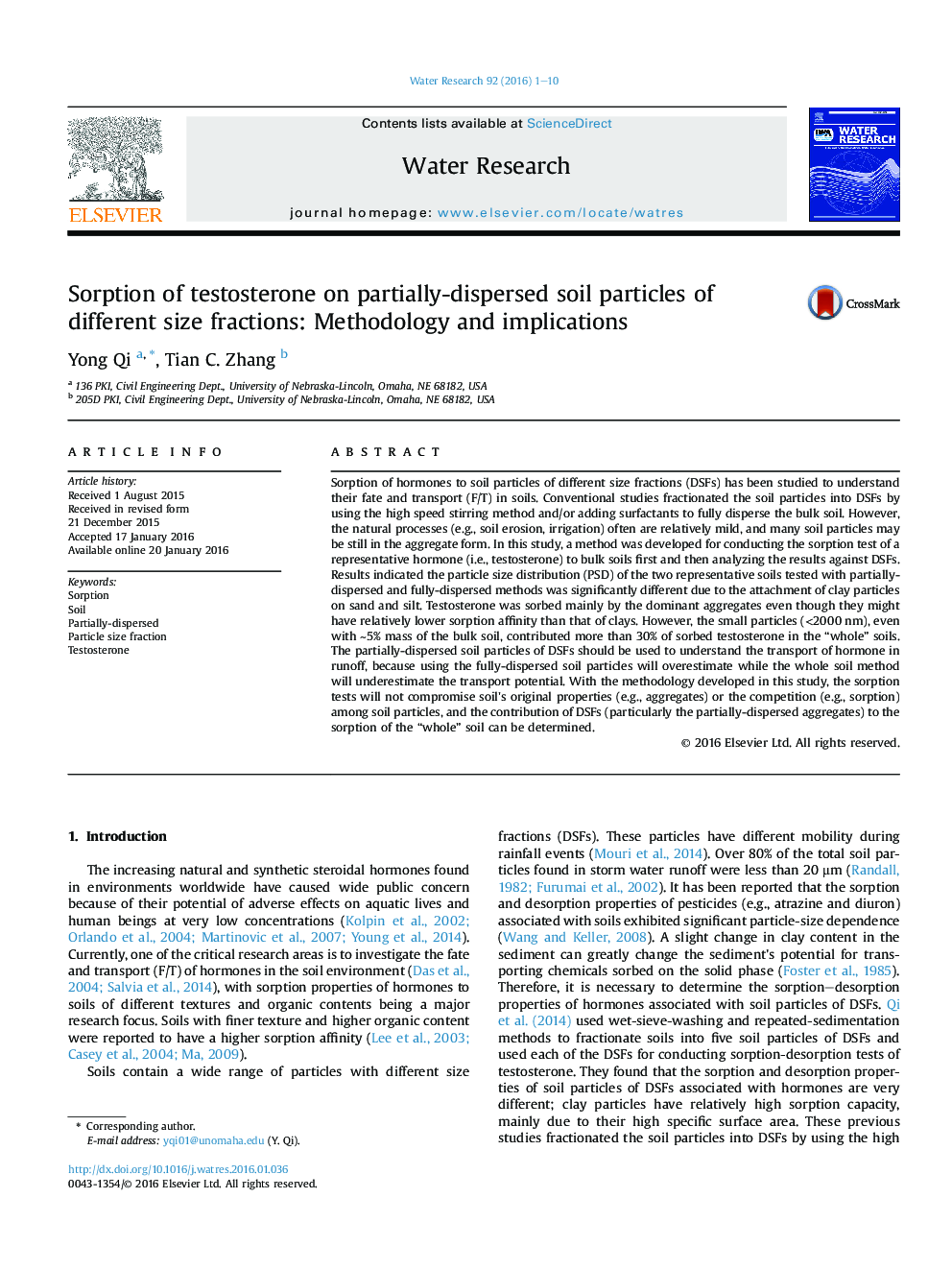| کد مقاله | کد نشریه | سال انتشار | مقاله انگلیسی | نسخه تمام متن |
|---|---|---|---|---|
| 6365239 | 1623076 | 2016 | 10 صفحه PDF | دانلود رایگان |
- Particle size distributions of partially- and fully-dispersed soils are significantly different.
- Using partially-dispersed soil particles is more appropriate to study the sorption of testosterone.
- Testosterone is sorbed mainly by the dominant aggregates.
- A new methodology to study the sorption of soil particles under their original properties.
Sorption of hormones to soil particles of different size fractions (DSFs) has been studied to understand their fate and transport (F/T) in soils. Conventional studies fractionated the soil particles into DSFs by using the high speed stirring method and/or adding surfactants to fully disperse the bulk soil. However, the natural processes (e.g., soil erosion, irrigation) often are relatively mild, and many soil particles may be still in the aggregate form. In this study, a method was developed for conducting the sorption test of a representative hormone (i.e., testosterone) to bulk soils first and then analyzing the results against DSFs. Results indicated the particle size distribution (PSD) of the two representative soils tested with partially-dispersed and fully-dispersed methods was significantly different due to the attachment of clay particles on sand and silt. Testosterone was sorbed mainly by the dominant aggregates even though they might have relatively lower sorption affinity than that of clays. However, the small particles (<2000Â nm), even with â¼5% mass of the bulk soil, contributed more than 30% of sorbed testosterone in the “whole” soils. The partially-dispersed soil particles of DSFs should be used to understand the transport of hormone in runoff, because using the fully-dispersed soil particles will overestimate while the whole soil method will underestimate the transport potential. With the methodology developed in this study, the sorption tests will not compromise soil's original properties (e.g., aggregates) or the competition (e.g., sorption) among soil particles, and the contribution of DSFs (particularly the partially-dispersed aggregates) to the sorption of the “whole” soil can be determined.
195
Journal: Water Research - Volume 92, 1 April 2016, Pages 1-10
